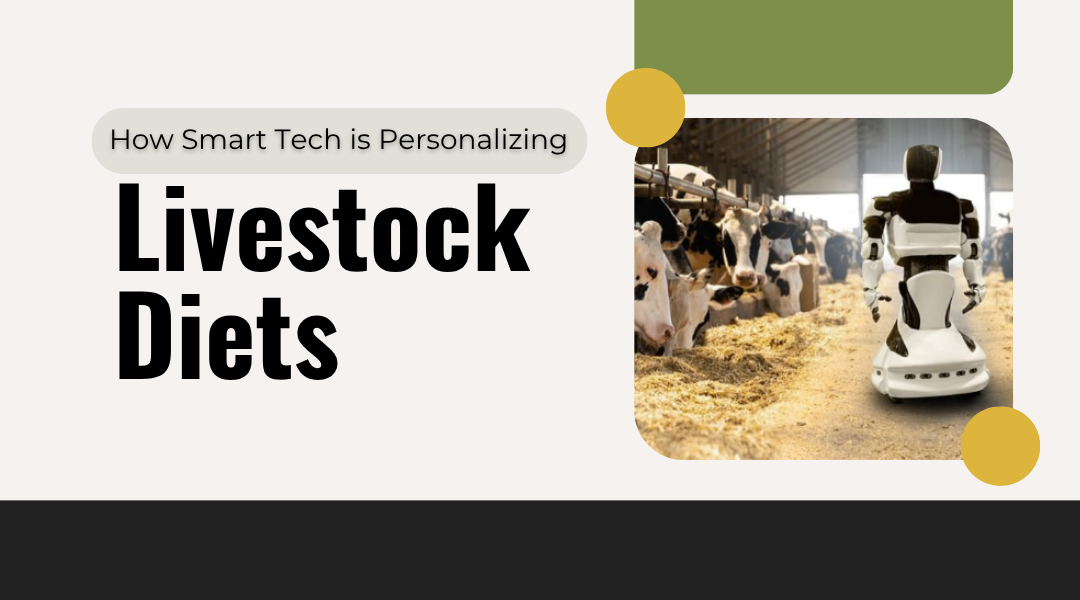For generations, feeding animals on a farm was more art than science. Farmers relied on time-honored traditions, rough estimates, and a keen eye to keep their herds healthy. But just as GPS guidance transformed planting crops, a new wave of intelligent technology is turning livestock nutrition into a precise, data-driven operation. This isn’t about robots taking over; it’s about giving farmers a digital toolkit to understand and cater to each animal’s needs like never before.
Let’s explore how this is happening on the ground.
The Pitfalls of the Old Way: Why “One Ration Fits All” Doesn’t Work
Imagine a free-range egg operation where a flock of thousands of hens, from sprightly young pullets to older, less active layers, all get the exact same feed scattered on the ground. The boldest birds eat their fill, often overeating and wasting feed, while the more timid ones get the nutritional short end of the stick. This was the standard for many operations, leading to wasted money on uneaten feed and uneven animal health.
The core problem is variability. No two animals are identical. A dairy cow at peak lactation has wildly different energy needs than a dry cow. A piglet building muscle requires a different protein blend than a finishing hog. Traditional feeding couldn’t account for this individuality, leaving both performance and profits on the table.
The New Toolkit: Sensors, Data, and a Digital Brain
The modern solution hinges on three key pieces of technology working in concert:
- The Digital Senses: Wearable ear tags or collars act like a Fitbit for livestock, constantly monitoring an animal’s activity levels, rumination patterns (for cattle), and even body temperature. Smart scales in feeding stations or walkways can track weight changes with stunning accuracy, without any human intervention.
- The Central Nervous System: This is the “smart” part of the system. Sophisticated algorithms—the digital brain—crunch the numbers flowing in from the sensors. They don’t just collect data; they learn from it, identifying patterns and correlations that would be invisible to the human eye.
- The Automated Hand: Smart feeding systems receive instructions from the digital brain. Think of them as automated, personalized chefs. They mix and dispense a specific ration for each animal as it approaches the trough, ensuring the right nutrients are delivered at the right time.
How It Works in Practice: Real-World Applications
This isn’t just a lab theory; it’s delivering tangible results on farms today.
- Example 1: The High-Performance Dairy Herd. Consider a 500-cow dairy farm in Wisconsin. Each cow wears a collar that tracks her activity and chewing cud. The system notices that “Cow #243” has seen a 15% drop in rumination, a classic early sign of a health issue or metabolic stress. Before the farmer even sees a drop in milk yield, the system automatically adjusts her ration, slightly reducing energy-dense grains and boosting her fiber intake to help her digestive system recover. This early intervention prevents a full-blown illness, saving on vet bills and preserving her milk production.
- Example 2: The Efficient Beef Feedlot. On a sprawling Texas cattle yard, steers are tracked via an ear tag as they move to a smart feed bunk. The system recognizes each animal and knows its historical growth rate. For a group of animals that’s slightly behind target weight, it dispenses a higher-energy finishing ration. For another group that’s on track, it provides a maintenance ration to prevent them from becoming overly fat, which reduces meat quality. This ensures the entire herd reaches its optimal weight uniformly, maximizing the value of every pound of feed.
Looking Ahead: The Future of Farming is Informed
Of course, adopting this technology comes with its own set of challenges. It requires a reliable internet connection in rural areas, a significant upfront investment, and a willingness for farmers to become data-literate managers. The key to adoption is proving the return on investment: less wasted feed, improved animal health, and higher-quality end products.
Conclusion: A Return to Care, Powered by Insight
This technological shift isn’t about replacing the farmer’s intuition. It’s about augmenting it with profound, real-time insight. By moving away from blanket rations and towards customized diets, we’re entering an era of true animal husbandry. This approach is a win-win-win: it’s better for the farmer’s bottom line, better for the animal’s well-being, and better for the environment through drastically reduced waste. In the end, smart feeding technology is simply the newest and most powerful tool to do what farmers have always aimed for—caring for their animals in the most effective way possible.
